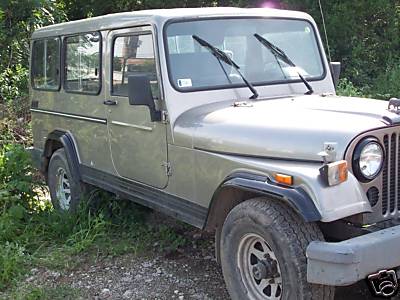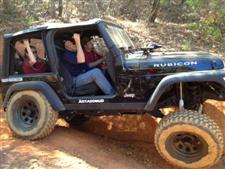The Korando Story
by Thomas Nickle
(Anyang, Korea)
Hey, This is Thomas. I am an American that is living in Korea and own a Korando long body (K-9). What I am writing is from information that I have gleaned over the years and may be a bit off do to eastern/western translation.
Because of the Korean war, the Jeep was familiar in Korea. In 1964, Ha dong-hwa motors started assembling Jeeps for the U.S. military for use in Korea, Japan, and Vietnam as they were the closest ally at the time. Since there was no real manufacturing of cars at the time (most Korean car companies were just assembly plants) Ha dong-hwa began selling the Jeeps to the civilian market in 1969 as the Korando which stands for "Korea can do".
In 1977, Ha dong-hwa changed their name to Dong-A motors and so the Korando was the Dong-a Korando and military Jeep. These were still basically Willys style Jeeps. A few years later the military started using the Kia Retona as its light military transport. After losing the military contract, Dong-a was searching for a way to enhance its sales.
Around 1983(?) they made a contract with Chrysler to produce the CJ7. They went one step further and started producing a "family wagon" (CJ 6/8) called the Korando 9. Then in 1986, Dong-a was bought out by the Ssanyeong conglomerate and so the name was changed to the Ssanyeong Korando. These models were produced until 1996 when a completely different Korando was introduced.
As far as pedigree goes, the short body is a Jeep CJ7 body and the axles are Dana copies. However, you were able to get two engines. The
They are great engines that have high torque, but will not get you anywhere fast as they are only 2500cc 70hp engines. The Mercedes engines where put into the new Korandos after 1995 and the Korando Musso. The bad news is that because Korea is such a small country, when a car is junked, it gets crushed. Therefore, there are not many of the CJ7s left in Korea and even fewer (maybe 250-300) of the long bodies left here. That is the bad news.
The good news is that they are still CJs so you can basically fit anything you want into the body and it will work. Plus, guys are starting to buy up these old cars and fix them so there is a fan club here. I rebuilt my RS diesel as I did not care about speed as much as I wanted good gas mileage and longevity.
I am going to stop here as I do not have my reading glasses and I have to proof read this. Later, I will post pictures when I put my dash back together. I hope this gives you a better understanding of the Korando.
Thomas
Editor's Comment: This information is hard to come by. Thanks Thomas, for taking the time to help explain the origins of this particular Jeep.
Comments for The Korando Story
|
||
|
||
|
||
|
Show Off Your Jeep on this Website for Free.. All Jeeps Were Not Created Equal! This easy to read ebook compares them all. 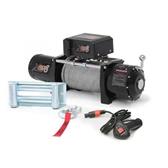 Winches Made for Your Jeep. Now winches are better made and cheaper to buy than ever! 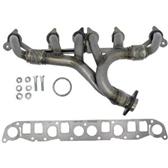 Jeep Exhaust Manifolds. They crack and leak. Replace yours at the best price possible. 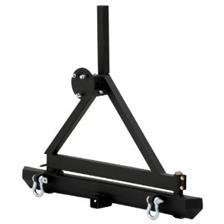 Jeep Bumpers and Tire Carriers. Replace those weak original bumpers and spare tire carrier. Your Jeep will be more functional and look cool too!  Jeep Rock Rails/Sliders. Protect your Jeep's vulnerable Rocker Panels...and look awesome at the same time!  Larry Morton, owner 4-The-Love-of-Jeeps.com They Give So We Can Be Free! |
